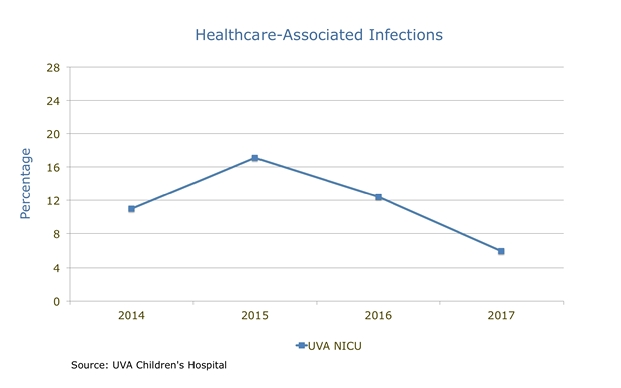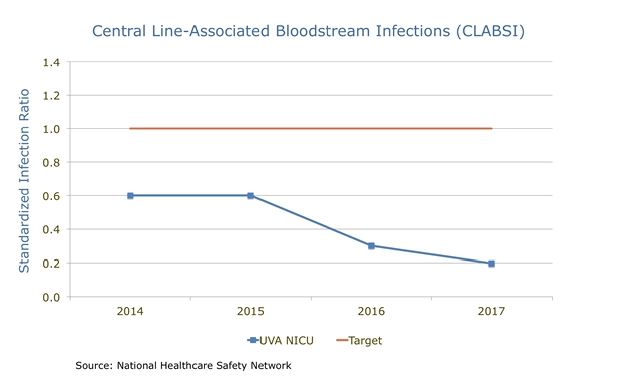In the NICU, infections are a serious risk. At UVA Health Children's, we look at data from independent sources to measure how well we're doing at preventing infections compared to other NICUs across the country. NICU infections data helps us evaluate how our safety standards are protecting the babies in our care.
Healthcare-Associated Infections
A late nosocomial infection is a type of healthcare-associated infection that develops more than 72 hours after birth from a bacteria or virus not spread from the mother.
Late nosocomial infections among babies weighing less than 3.3 pounds admitted to the NICU at UVA Health Children’s Hospital.
A lower number is better.
The national average of nosocomial infection prevalence for infants weighing between 1.1 and 3.3 pounds was 15.0 percent between 2000 and 2009 among North American hospitals in the Vermont Oxford Network. This is the most recent data available for this metric. Source: Horbar et al. Pediatrics 2012; 129:1019.
Measured on an annual (one-year) basis.
Central Line-Associated Blood Stream Infections
Central lines are small tubes that provide fluids, medications, blood products, and nutrition supplements to the baby. Infections can potentially enter the bloodstream through a central line.
We measure central line-associated bloodstream infections (CLABSI) using the National Healthcare Safety Network Standardized Infection Ratio, which takes into account the type of NICU and the babies it treats. The network is maintained by the Centers for Disease Control and Prevention.
Any number below 1 shows fewer infections than expected at a Level IV NICU. Level IV NICUs, like at UVA Health Children's, provide the highest level of care possible.
Bloodstream infections associated with central line catheters among babies admitted to the NICU at UVA Health Children’s Hospital.
Standardized Infection Ratio = A rate lower than 1 indicates fewer infections than predicted for a Level IV NICU.
A lower number is better.
Measured on an annual (one-year) basis.

